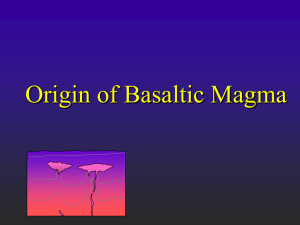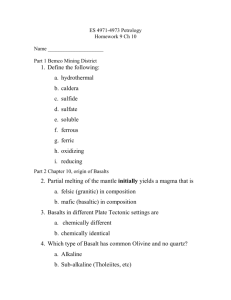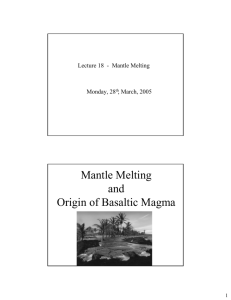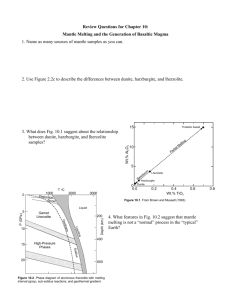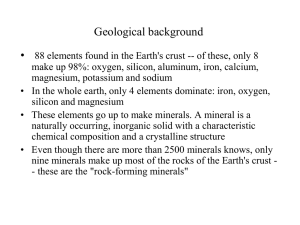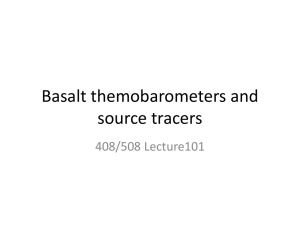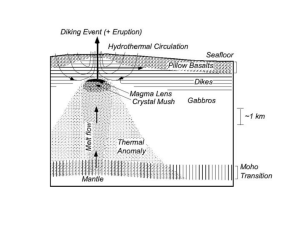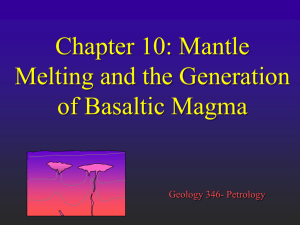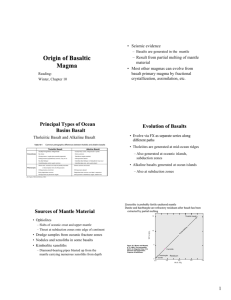General
advertisement
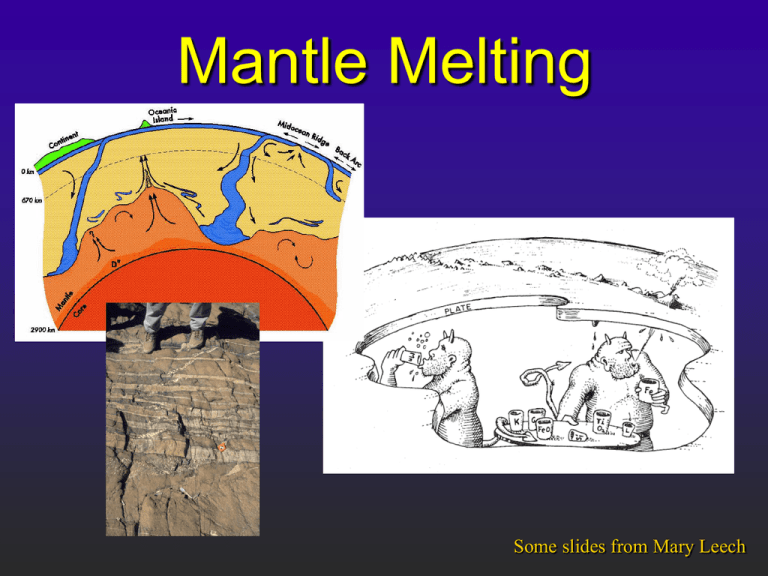
Mantle Melting Some slides from Mary Leech Table 18-4. A Classification of Granitoid Rocks Based on Tectonic Setting. After Pitcher (1983) in K. J. Hsü (ed.), Mountain Building Processes, Academic Press, London; Pitcher (1993), The Nature and Origin of Granite, Blackie, London; and Barbarin (1990) Geol. Journal, 25, 227-238. Winter (2001) An Introduction to Igneous and Metamorphic Petrology. Prentice Hall. Lherzolite is probably fertile (undepleted) unaltered mantle Harzburgite ± Dunite are refractory residuum after basalt has been extracted by partial melting Tholeiitic basalt 15 Ultramafic rocks 10 Brown and Mussett, A. E. (1993), The Inaccessible Earth: An Integrated View of Its Structure and Composition. Chapman & Hall/Kluwer. Slide from Mary Leech. 5 Lherzolite Harzburgite Dunite 0 0.0 0.2 Residuum 0.4 Wt.% TiO2 0.6 0.8 Lherzolite: A type of peridotite with Olivine > Opx + Cpx Olivine Dunite 90 Peridotites Lherzolite 40 Pyroxenites Olivine Websterite Orthopyroxenite 10 10 Orthopyroxene Websterite Clinopyroxenite Figure 2-2 C After IUGS Clinopyroxene How does the mantle melt?? 1) Increase the temperature 2) Lower the pressure Adiabatic rise of mantle with no conductive heat loss Decompression melting could melt at least 30% Phase diagram of aluminous lherzolite with melting interval (pink), sub-solidus reactions, and geothermal gradient. After Wyllie, P. J. (1981). Geol. Rundsch. 70, 128-153. 3) Add volatiles (especially H2O) Phase diagram for aluminous 4-phase lherzolite: Alminous phase = Plagioclase shallow (< 50 km) Spinel 50-80 km Garnet 80-400 km Si VI coord. > 400 km Where does mantle melting occur? Result? Basalt What is MO R B ? id cean idge sasalt MgO and FeO Al2O3 and CaO SiO2 Na2O, K2O, TiO2, P2O5 Basaltic glasses from the Afar region of the MAR. Note different ordinate scales. From Stakes et al. (1984) J. Geophys. Res., 89, 6995-7028. Ternary Variation Diagrams Example: AFM diagram (alkalis-FeO*-MgO) AFM diagram for Crater Lake volcanics, Oregon Cascades. From Mary Leech Conclusions about MORBs, and the processes beneath mid-ocean ridges MORBs are not the completely uniform magmas that they were once considered to be They show chemical trends consistent with fractional crystallization of olivine, plagioclase, and perhaps clinopyroxene MORBs cannot be primary magmas, but are derivative magmas resulting from fractional crystallization (~ 60%)
